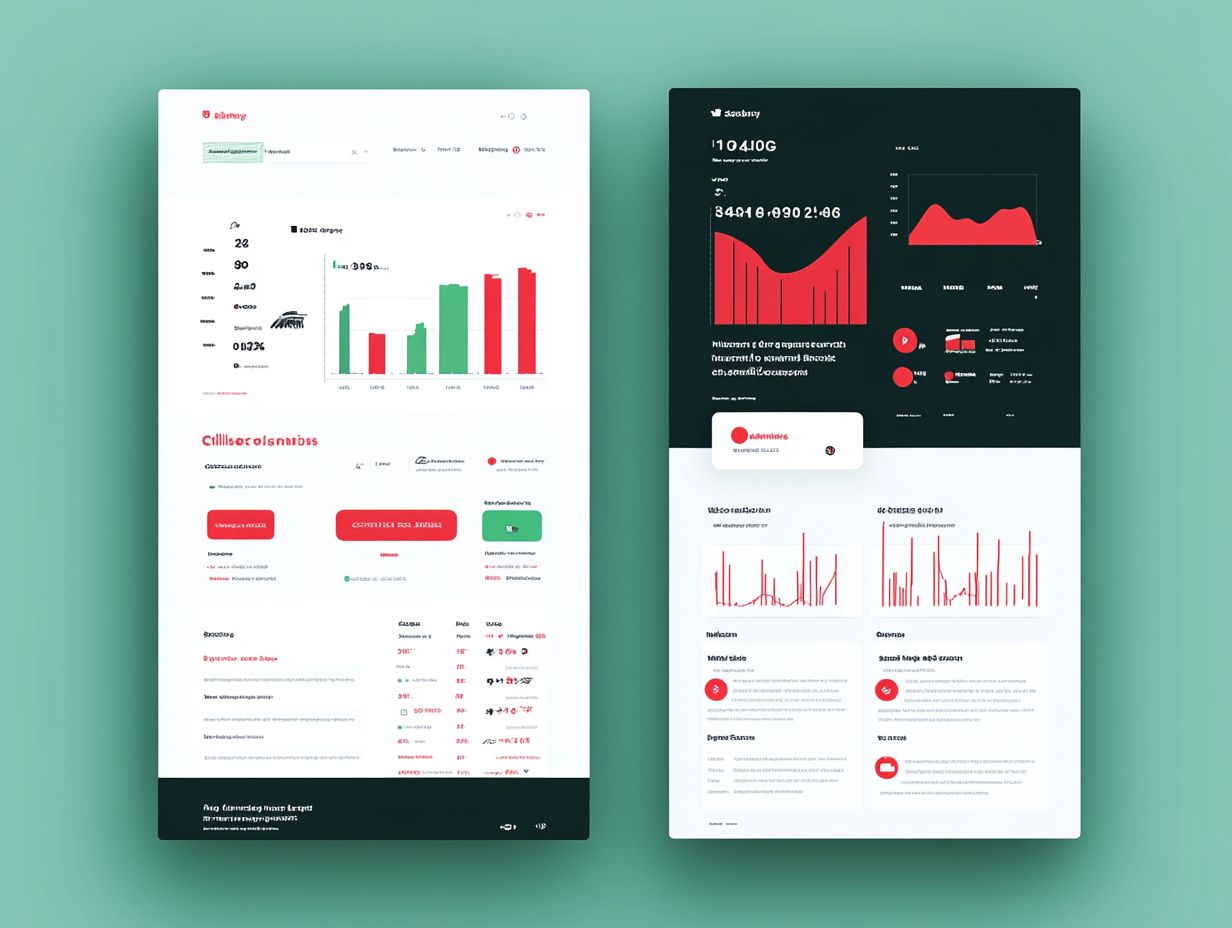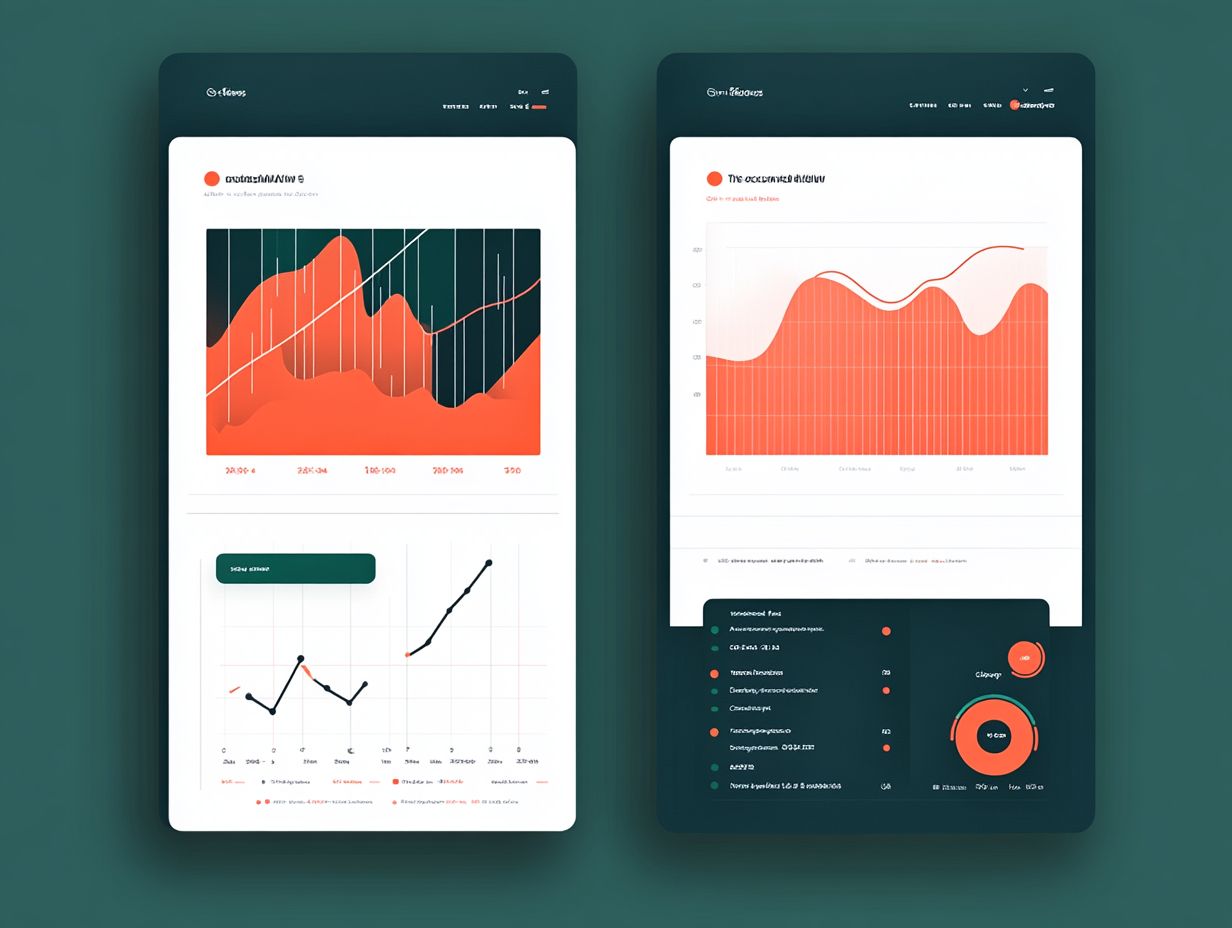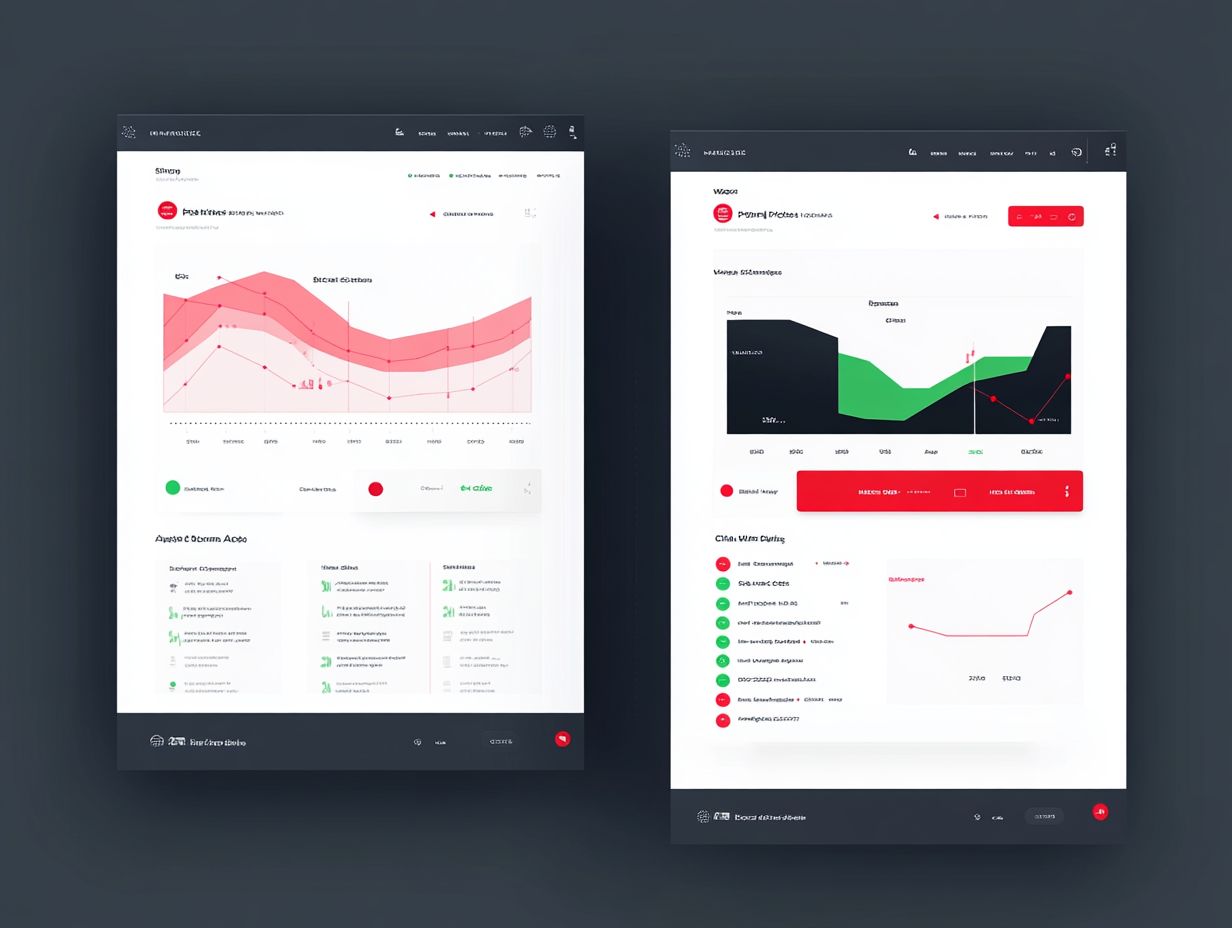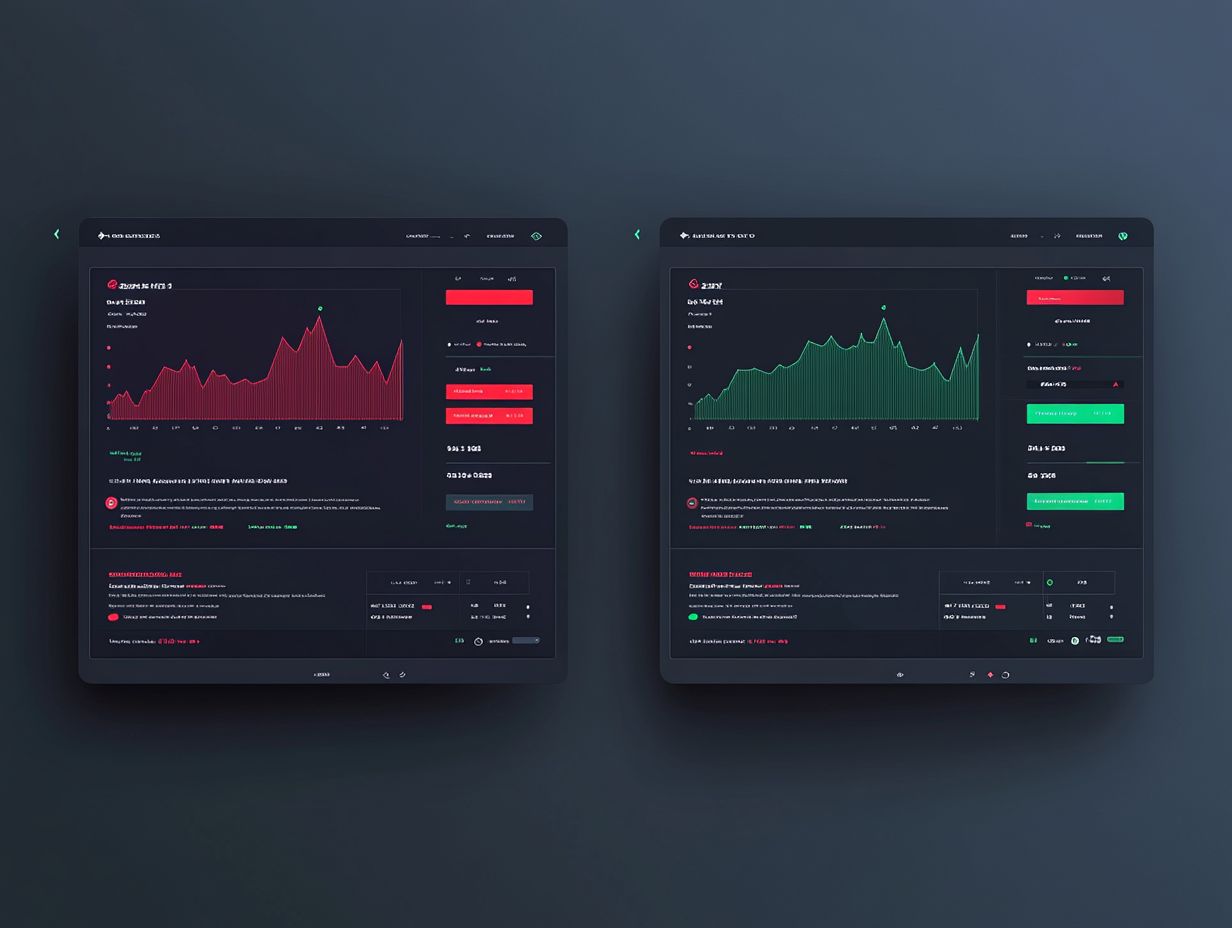How to Use A/B Testing for Better Results
Let's Set Up Your Lead Generation Strategy
Fill out the form below, and our team will get in touch with you to create a tailored solution for your business.
A/B testing, also known as split testing, is an exceptional marketing strategy that allows you to compare two versions of a web page or campaign to see which one truly resonates with your audience in terms of user engagement and conversion rates. This approach is fundamental to conversion rate optimization, which is the process of increasing the percentage of visitors who take a desired action on your website. It is rooted in statistical analysis and championed by pioneers like Claude Hopkins and Ronald Fisher.
This method enables you to establish a control group and delve into user behavior through ways to collect data like heatmaps and dashboard analysis, which show how users interact with your site.
The importance of A/B testing goes far beyond simple experimentation; it has transformed the way companies craft their marketing campaigns, especially in the digital arena, such as landing pages and email marketing. By dissecting user interactions and responses to various elements like headlines, call-to-action buttons, or visual layouts you can uncover preferences that drive higher conversion rates.
Numerous tools, including Google Optimize and Optimizely, facilitate this process, allowing you to run tests seamlessly and analyze results with striking precision. A/B testing has a rich historical context and continues to evolve, adapting to shifts in consumer behavior and marketing technologies while remaining a crucial element in achieving data-driven decision-making.
Contents
- Benefits of A/B Testing
- How to Conduct A/B Testing
- Let's Set Up Your Lead Generation Strategy
- Best Practices for A/B Testing
- Interpreting and Implementing Results
- Let's Set Up Your Lead Generation Strategy
- Frequently Asked Questions
- What is A/B testing and how can it help improve my results?
- How do I conduct an A/B test for my website or app and optimize my landing page?
- Is it necessary to have a large sample size for A/B testing to ensure statistical significance?
- Can I A/B test multiple elements at the same time?
- What are some common mistakes to avoid when conducting A/B tests?
- Let's Set Up Your Lead Generation Strategy
Benefits of A/B Testing

A/B testing opens up a world of opportunities to boost your conversion rates and enhance user experience! This results in improved customer engagement and more effective lead-generation strategies, particularly for businesses in the e-commerce and B2B technology sectors. It can significantly reduce bounce rates and improve engagement through targeted email sign-up modals.
Embracing this approach could be the key to unlocking greater success and connection with your audience.
Improving Conversion Rates and User Experience
Improving your conversion rates and enhancing user experience should be at the forefront of your A/B testing efforts. This approach allows you to experiment with different call-to-action buttons, product images, and overall page layouts. By doing so, you can identify which variations effectively reduce bounce rates and boost successful customer interactions, thus driving your website optimization strategy.
By analyzing how users engage with various elements like differing color schemes or button placements you ll gain valuable insights that can greatly influence purchasing decisions. Adjusting these components not only grabs attention but also builds trust and fosters engagement among your visitors.
For example, a well-placed call-to-action can guide users seamlessly along their purchasing journey, while eye-catching product imagery can evoke emotional responses that resonate with potential buyers. By continuously refining these elements through A/B testing and employing hypothesis testing, you can create a more intuitive online experience that ultimately drives higher conversion rates.
How to Conduct A/B Testing
Conducting A/B testing requires a structured approach. Begin by defining a clear hypothesis that guides your experiment. Establishing a solid experiment framework is crucial for success.
Next, create a robust framework for testing, ensuring that you incorporate an analytics tool like Google Analytics to collect data on how various variations influence user behavior and engagement. It’s also essential to maintain a control group for effective comparison, allowing you to draw meaningful insights from your results and inform your marketing strategy.
Start your A/B testing today and watch your conversion rates soar!
Step-by-Step Guide

The step-by-step guide to A/B testing begins with formulating a clear hypothesis. A hypothesis is a clear idea of what you think will happen in your test. This could be adjustments that might enhance user experience or boost conversion rates.
Let's Set Up Your Lead Generation Strategy
Fill out the form below, and our team will get in touch with you to create a tailored solution for your business.
From there, you ll set up a control group alongside variations for precise dashboard analysis. This initial phase is crucial as it lays the groundwork for the entire experiment.
Once you ve defined your hypothesis, it s essential to create a structured framework for the test. This includes selecting the right audience and determining the specific metrics you ll measure.
By maintaining a control group, you enable a reliable comparison against the variations being tested. This ensures that any observed changes in behavior can be attributed directly to the modifications you ve implemented.
This method is central to successful hypothesis testing. After running the experiment for a predetermined period, the next step involves conducting a thorough analysis of the results using analytics tools.
This not only helps you understand the data but also informs your future strategies. This sets you up for success in terms of website optimization and overall marketing campaigns.
Best Practices for A/B Testing
Implementing best practices for A/B testing is essential to achieve accurate results. This ensures that the conclusions you draw are statistically significant, which is vital to enhancing your conversion rate optimization efforts.
This approach refines your overall marketing strategy and significantly boosts customer engagement. By prioritizing these practices, you enable your campaigns to resonate more effectively with your audience.
Key practices include understanding your audience, setting clear goals, and analyzing results thoroughly. These elements are crucial for effective email campaigns.
Important Considerations for Accurate Results
When you embark on A/B testing, it s vital to your success to grasp the key considerations that will lead to accurate results. Ensuring statistical significance and employing proper data collection methods are essential steps.
These steps inform your marketing campaigns and help reduce bounce rates while enhancing overall user experience. This process requires your careful attention to vital factors like sample size, which directly impacts the reliability of your results.
Timing is another aspect to consider, as external events can distort data trends. By maintaining data integrity, you ensure the accuracy of the insights you derive.
This allows you to make informed decisions that enhance user engagement and boost conversion rates. By prioritizing these elements, you will be better equipped to assess the effectiveness of different strategies.
This leads to more precise targeting and ultimately improved marketing outcomes. This is essential for the success of both B2B technology firms and e-commerce businesses.
Interpreting and Implementing Results

Interpreting and implementing the results from A/B testing is an essential process. It shapes your marketing strategy, particularly when considering how variations impact customer engagement.
Let's Set Up Your Lead Generation Strategy
Fill out the form below, and our team will get in touch with you to create a tailored solution for your business.
By diving into the data, you can pinpoint which variations enhance customer engagement and ultimately lead to improved conversion rates. This meticulous analysis refines your approach.
It also enables you to make informed decisions that resonate with your audience and support your website optimization efforts. Start your A/B testing today for better results!
Analyzing Data and Making Changes
Analyzing data from A/B testing enables you to make informed decisions about necessary changes to your website optimization strategies. By refining call-to-action elements based on user interactions and preferences, you can elevate your marketing game and drive higher conversion rates.
When you evaluate the results of different versions, you reveal patterns that show what resonates most with your audience. This exciting process uncovers both successful elements and barriers that may frustrate users. For example, simply tweaking button colors or altering headlines can lead to significantly improved conversion rates.
Using tools like statistical analysis helps ensure that the insights you gather are reliable, which allows for more effective hypothesis testing and creates a solid foundation for your marketing adjustments.
Ultimately, these actionable insights enable you to enhance the overall user experience and drive more effective campaigns, essential in today s competitive marketing landscape.
Frequently Asked Questions
What is A/B testing and how can it help improve my results?

A/B testing is a method used to compare two versions of a webpage or app to see which one performs better. It can help you make data-driven decisions and improve your results by showing which version resonates better with your audience.
How do I conduct an A/B test for my website or app and optimize my landing page?
First, define the goal of your test and choose an element to test, such as a headline, call-to-action, or layout. Then, create two versions of the element and split your traffic evenly between them. Measure the results and use statistical analysis to determine the winner while monitoring search results page performance.
Is it necessary to have a large sample size for A/B testing to ensure statistical significance?
No, the sample size needed for A/B testing depends on the change you are testing and the size of your audience. While a larger sample size can increase the validity of your results, smaller tests can still provide valuable insights and contribute to conversion rate optimization.
Can I A/B test multiple elements at the same time?
It is best to focus on one element at a time to get clear and actionable insights related to conversion rate optimization. Testing multiple elements simultaneously can make it difficult to determine the cause of any changes in results.
By continuously running A/B tests, you can refine your marketing strategy and improve lead generation through effective email campaigns and call-to-action strategies. Claude Hopkins and Ronald Fisher emphasized the importance of statistical analysis and experimentation in marketing, laying the groundwork for effective email sign-up modals and homepage promotions.
Using heatmaps can reveal how users interact with your site, helping improve email marketing and social media strategies for B2B technology or e-commerce settings. Incorporating tools like Google Analytics enhances your data collection and analytics tool usage, aiding marketing teams in refining their strategies.
What are some common mistakes to avoid when conducting A/B tests?
Some common mistakes include not defining a clear goal, conducting tests without a control group, making changes based on personal opinions rather than data, and not allowing the test enough time to achieve statistical significance. Ensure your test is set up correctly and that you are measuring the right metrics, such as bounce rate reduction and customer engagement.
Let's Set Up Your Lead Generation Strategy
Fill out the form below, and our team will get in touch with you to create a tailored solution for your business.
How often should I conduct A/B testing for my website or app?
A/B testing should be an ongoing process. It allows you to continuously improve and optimize your website or app, especially through dashboard analysis and optimization techniques. Conduct tests whenever you make significant changes or updates, such as revising landing pages, product images, or call-to-action buttons.
Start your A/B testing journey today and see how small changes can lead to big results!






